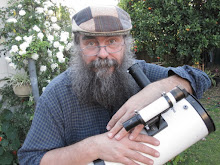Tuesday, May 20, 2025
Thursday May 22 to Thursday May 29
The New Moon is Tuesday May 27. Jupiter and Mars are visible in the evening sky. Jupiter sets shortly after the sky is fully dark and Mars is lowering in the
early evening sky. The thin crescent Moon is near Jupiter on the 28th. Look for the constellation Corona Borealis before midnight, the blaze star T Coronae Borealis (TCrB) may go Nova eventually. Saturn and Venus are visible in the morning twilight. The waning crescent Moon is near Saturn on the 23rd, and near Venus on the 24th.
The New Moon is Tuesday May 27. The Moon is at Perigee, when it is closest to the earth, on the 26th.
Saturn is visible in the twilight above Venus. The crescent Moon is near Venus.
The insets show the telescopic views of Saturn and Venus at this time.
If you look to the North just before midnight, you will see a prominent bright orange star, Arcturus, if you look northeast you will see a dainty circlet of stars. Corona Borealis, the northern crown. The blaze star T CrB is located on the right-hand side to the circlet, where the line of stars turns down, there are no other bright stars in the region, so when it erupts it will be easily visible. Viewing tips at my T CrB post.
Just above this is the asteroid Vesta, it was at opposition on the 2nd and theoretically visible to the unaided eye. it is roughly between the bright red Star Antares and Arcturus, and two and a half binocular widths from the bright star Beta Librae. See my opposition of Vesta page for more details and charts.
Similar views will be seen from the rest of Australia at roughly the equivalent local time (90 minutes after sunset).
Similar views will be seen from the rest of Australia at roughly the equivalent local time (30 minutes after sunset).
Elsewhere in Australia will see a similar view at the equivalent time (90 minutes after sunset).
Mercury is lost in the morning twilight.
Venus is high in the morning twilight. It is below Saturn. It is close to the crescent Moon on the 24th.
Mars is lowering in the evening sky.
Jupiter is low on the north-western horizon and is setting shortly after when the sky is fully dark. It is close to the thin crescent Moon on the 28th and 29th.
Saturn is rising in the morning the twilight. It is close to the crescent Moon on the 23rd.
Star Map via Virtual sky. Use your mouse to scroll around and press 8 when your pointer is in the map to set to the current time.
Cloud cover predictions can be found at SkippySky.
Here is the near-real time satellite view of the clouds (day and night) http://satview.bom.gov.au/
Labels: weekly sky






 Click to read about or order
Click to read about or order Click to read about or order
Click to read about or order Click to read about or order
Click to read about or order Click to read about or order
Click to read about or order